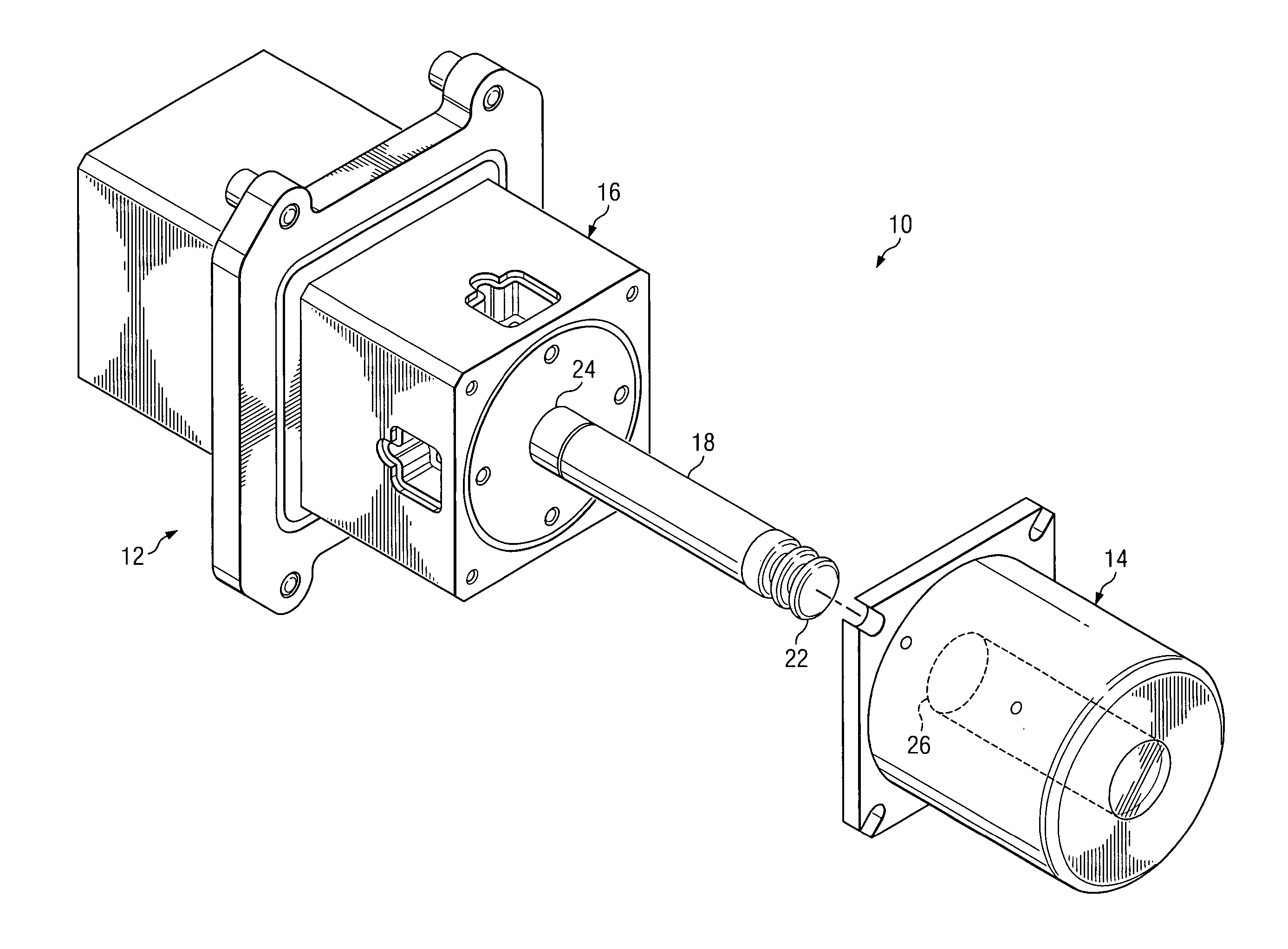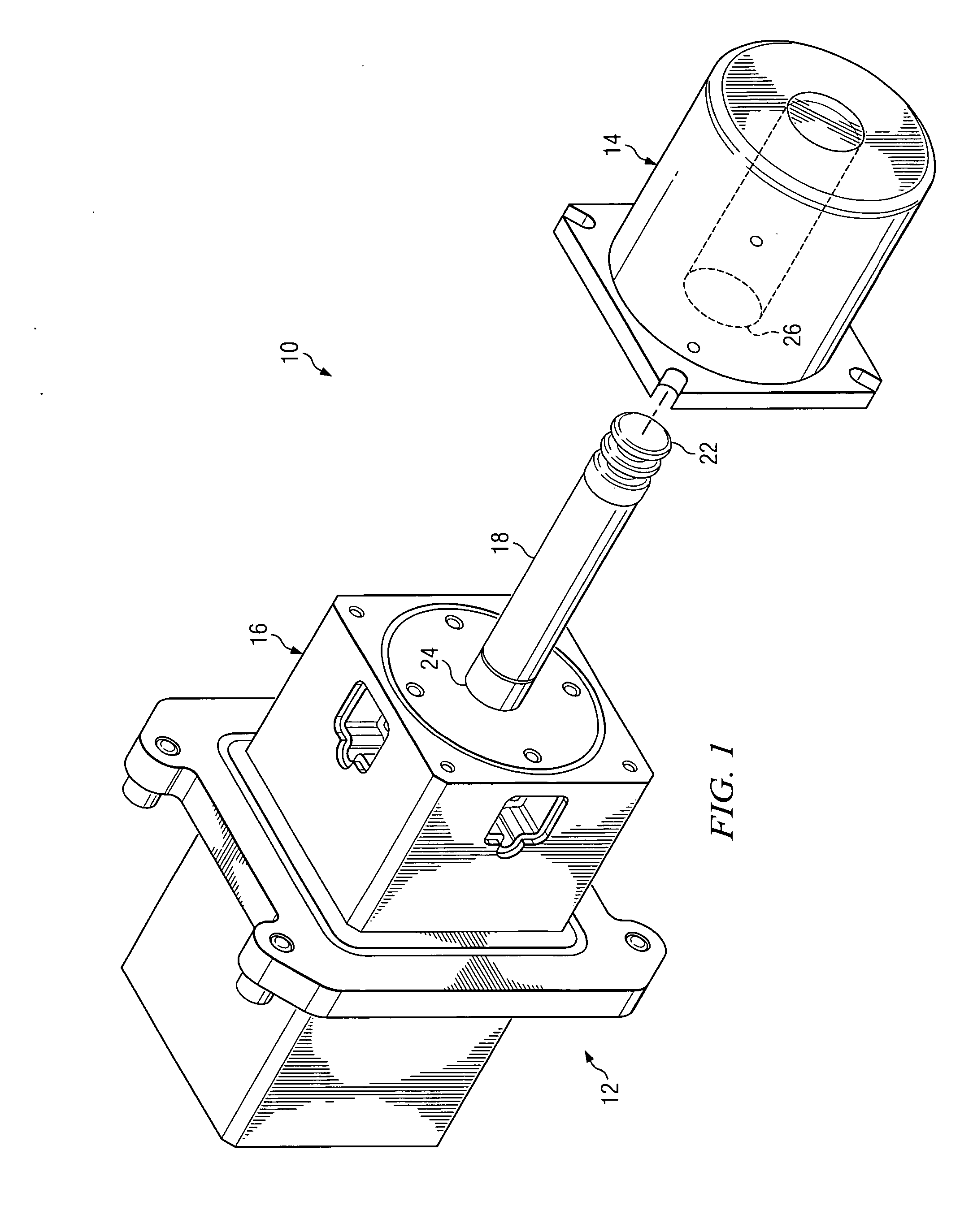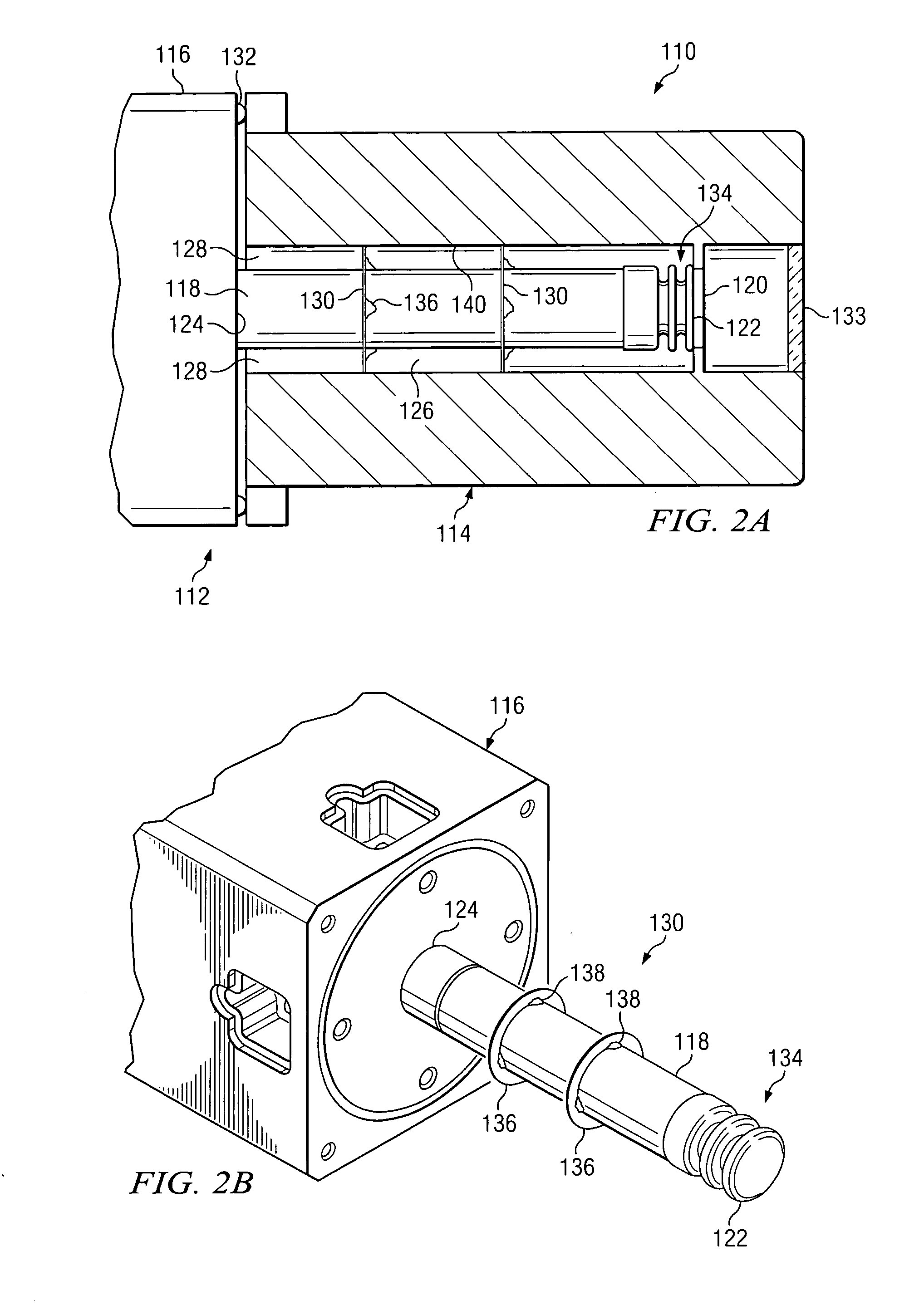Method and system for cryogenic cooling
a cryogenic cooling and cooling system technology, applied in the field of cryogenic cooling systems, can solve problems such as the decrease of the cooling time of the system, and achieve the effects of reducing the cooling requirements, reducing the cooling time of the system, and increasing the effective life of the cooling system
- Summary
- Abstract
- Description
- Claims
- Application Information
AI Technical Summary
Benefits of technology
Problems solved by technology
Method used
Image
Examples
Embodiment Construction
[0012] Embodiments of the present invention and its advantages are best understood by referring to FIGS. 1 through 2A of the drawings, like numerals being used for like and corresponding parts of the various drawings.
[0013]FIG. 1 is a schematic diagram illustrating a conventional cryogenic cooling system 10. Cooling system 10 includes a cryogenic cooler 12 and an associated Dewar 14. Cryogenic cooler 12 includes a cooling section 16 and a cold finger 18. Cooling section 16 generates a cold fluid which is circulated within the interior of cold finger 18. Cold finger 18 is inserted within a void region 26 of Dewar 14 to cool a device, such as an infrared detector formed on part of Dewar 14 (not explicitly shown). Cryogenic cooling systems 10 are well known and are described in the literature, including, for example in U.S. Pat. Nos. 4,028,907; 4,569,203; and 6,070,414.
[0014] An important aspect of the operation of cryogenic cooling systems 10 is the time required to bring detector 2...
PUM
 Login to View More
Login to View More Abstract
Description
Claims
Application Information
 Login to View More
Login to View More - R&D
- Intellectual Property
- Life Sciences
- Materials
- Tech Scout
- Unparalleled Data Quality
- Higher Quality Content
- 60% Fewer Hallucinations
Browse by: Latest US Patents, China's latest patents, Technical Efficacy Thesaurus, Application Domain, Technology Topic, Popular Technical Reports.
© 2025 PatSnap. All rights reserved.Legal|Privacy policy|Modern Slavery Act Transparency Statement|Sitemap|About US| Contact US: help@patsnap.com



